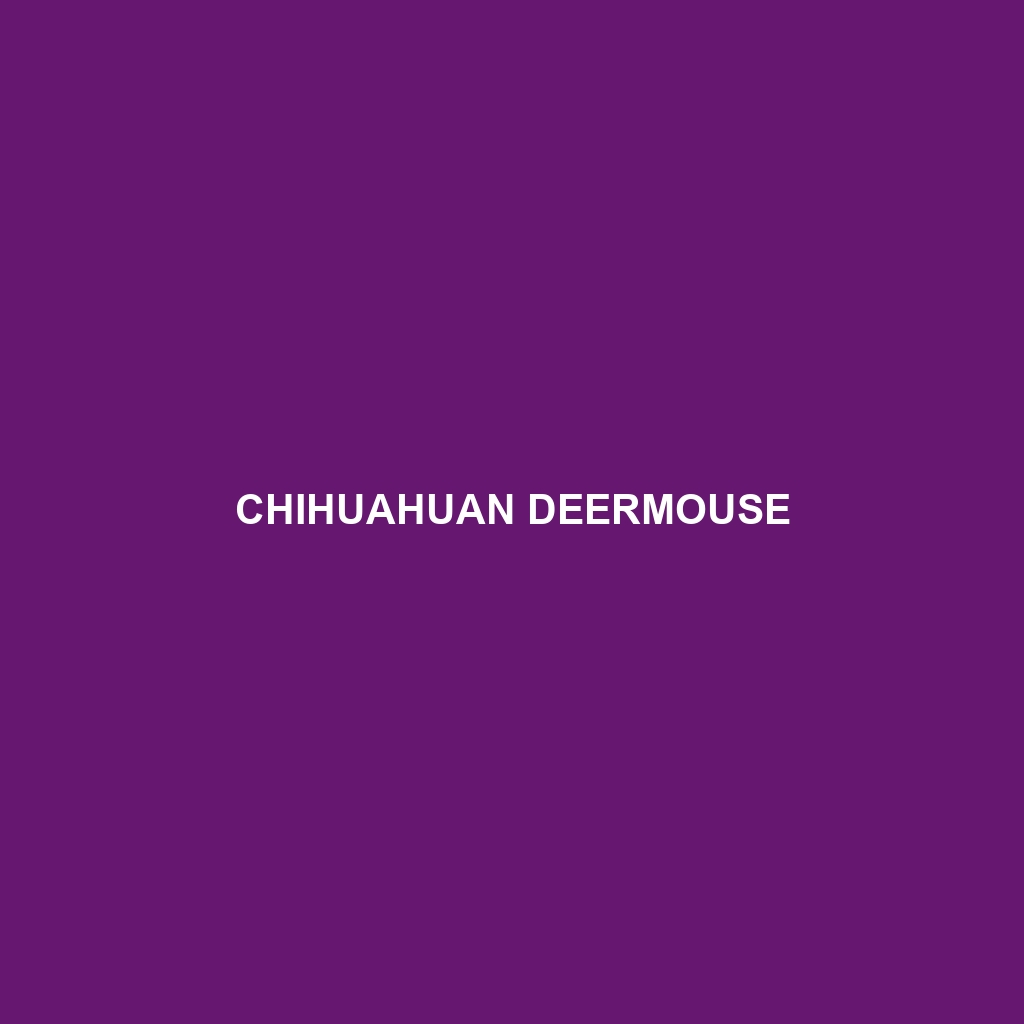Chihuahuan Deermouse
Common Name: Chihuahuan Deermouse
Scientific Name: Peromyscus maniculatus
Habitat: The Chihuahuan Deermouse primarily inhabits the high desert regions and grasslands of the Chihuahuan Desert, spanning across parts of the southwestern United States and northern Mexico. These mice are often found in rocky terrains, mesquite thickets, and areas with sparse vegetation, emphasizing their adaptability to arid environments.
Physical Characteristics: Chihuahuan Deermice are small mammals, typically measuring around 16 to 25 cm (6 to 10 inches) in total length, including a long, tufted tail. Their fur is generally a soft, sandy color with slight variations depending on the local environment, providing excellent camouflage. They possess large, rounded ears and large eyes, which contribute to their keen sense of hearing and sight, making them well-adapted for nocturnal life.
Behavior: This species is primarily nocturnal, engaging in foraging and social activities during the night. Chihuahuan Deermice are known for their agile movements and ability to climb, which aids in escaping predators. They often establish complex burrows for nesting and food storage, reflecting their intelligent behavior and problem-solving abilities. Additionally, they display social behaviors, often living in small groups.
Diet: As omnivores, Chihuahuan Deermice have a diverse diet consisting mainly of seeds, fruits, nuts, and insects. Their feeding habits can include scavenging and foraging, showcasing their adaptability to the available food sources within their desert habitat. This dietary flexibility is critical for survival in harsh environments, as it allows them to thrive despite fluctuating food availability.
Reproduction: The breeding season for Chihuahuan Deermice typically spans from spring to early fall. Females can produce multiple litters each year, with each litter comprising 2 to 6 offspring. The gestation period is around 24 days, and the young are weaned by three weeks. Notably, female Chihuahuan Deermice exhibit nurturing behavior, caring for their offspring until they are fully independent.
Conservation Status: Currently, the Chihuahuan Deermouse is classified as “Least Concern,” yet habitat loss and environmental changes pose potential threats to local populations. Ongoing habitat conservation efforts are crucial to maintain the stability of their ecosystem and prevent future declines in their numbers.
Interesting Facts: Chihuahuan Deermice are known for their remarkable ability to survive in extreme temperatures, often ranging from freezing at night to sweltering heat during the day. They also play a vital role in seed dispersal, which is important for maintaining the health of their desert ecosystem.
Role in Ecosystem: The Chihuahuan Deermouse serves as a vital prey species for a variety of predators, including snakes, birds of prey, and mammals like foxes. They contribute to ecosystem dynamics through their feeding habits, helping in the dispersion of plant seeds, which aids in vegetation growth. Their presence supports a balanced food web, highlighting their ecological importance.
